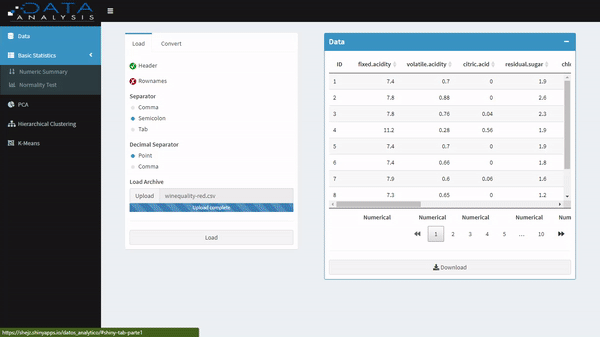

Statistical Data Analyzer
Statistical data analyzer tools with features like Principal Component Analysis (PCA), Clustering, and K-means offer significant advantages in data analysis and decision-making.
Skills and deliverables
Statistics, Exploratory Data Analysis, PCA, Clustering, K-Means
Challenge
Marketers face a diverse range of challenges in the dynamic world of marketing. Key challenges include handling vast volumes of data, accurately segmenting the target audience, staying ahead in a competitive landscape, adapting to changing consumer behavior, and measuring the ROI effectively.
Solution
However, statistical data analyzer tools, equipped with advanced features like Principal Component Analysis (PCA), Clustering, and K-means, provide powerful solutions. These tools simplify complex datasets through dimensionality reduction using PCA, aid in effective audience segmentation with Clustering, and refine customer understanding with the K-means algorithm. By harnessing these sophisticated statistical tools, marketers can optimize strategies, personalize campaigns, and enhance customer experiences, overcoming challenges and gaining a competitive edge in the dynamic market landscape.
Objectives
Statistical data analyzer tools with PCA, clustering, and K-means capabilities empower digital marketers to gain insights into customer behavior, personalize content and experiences, optimize marketing campaigns, analyze customer journeys, and segment markets effectively. These techniques enhance marketing effectiveness, drive higher conversions, and deliver more relevant and engaging experiences to customers in the digital space.
Unsupervised Machine Learning Techniques such as Principal Component Analysis (PCA), Clustering, and K-means offer specific benefits in the realm of digital marketing:
-
Customer Behavior Analysis: By applying PCA, clustering, and K-means techniques to customer data, marketers can gain insights into customer behavior patterns and preferences. These techniques allow for the identification of customer segments based on similarities in their browsing habits, purchase history, demographics, or engagement with marketing campaigns.
-
User Experience Optimization: Enable marketers to analyze user interactions and behavior on websites, mobile apps, or digital platforms. By employing clustering and K-means algorithms, marketers can identify groups of users with similar navigation patterns or engagement levels.
-
Campaign Optimization: Clustering and K-means algorithms assist in campaign optimization by grouping customers into segments based on their responses to marketing campaigns.

